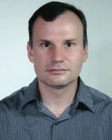Resilient Networked Microgrids
By Dr. Mehmet Cintuglu and Dmitry Ishchenko
Microgrids enable distributed energy resource (DER) penetration through their ability to provide a convenient interconnection mechanism between the DER providers, facilities and aggregators to be integrated in the national critical energy delivery infrastructure. Networked microgrids are defined as an ecosystem of cooperating and autonomous microgrids with points of interconnection to both utility electric power system and peer microgrid that enable flexible response to natural disasters, as well as the ability to reconstitute the entire distribution and transmission system from the component microgrids through coordinated restoration actions. A holistic view of the cyber-physical networked microgrid management system is a way of improving resiliency and responding cyber adversarial events.
Rapid adoption of microgrid technologies are mandated by aggressive renewable integration targets set by many utilities in the US. These high-profile targets result in enlarged network size, operational complexity, highly stochastic and volatile operational conditions with a real-time on demand information necessity. The increased implementation of networked private and utility-owned microgrids linked through heterogeneous Internet of Things (IoT) communication networks with added smart field devices (e.g. AMI) and sensors, results in substantial change in electricity networks control and communication paradigms. These emerging energy-IoT systems are complicated in terms of operational requirements, communication backbone needs, and data interoperability. Distributed microgrid control architectures inherently rely on tight coupling between the cyber and physical layers; therefore, the networked information systems are the core components of microgrids.
In the proposed control paradigm, each microgrid service area implements its own stability, protection/control and energy management functions. These functions are implemented in the microgrid control system, which may be centralized or distributed, and is integrated with protection relays and DER controllers. The service area can be completely separated from the main grid, both electrically and from the cyber standpoint. Additionally, each microgrid service area can be further partitioned to smaller microgrids where individual DERs can be preconfigured to operate independently supplying their designated critical loads. The networked microgrid control system must have the intelligence to determine if a system condition has met its individual microgrid operation condition and make transitions to the various operation modes as needed considering all possible networked microgrid topologies.
Networked microgrid DERs and other control entities in this ecosystem need to exchange information at various degrees of granularity and under various assumptions of trust. Information that passes across points of cyber and physical coupling may include state representation, measurements at various points, and dispatch requests.
A representative medium voltage power system consisting of 5 networked microgrids is shown in Fig.1. The individual as well as networked microgrid topologies for this use case have been derived based on typical US medium voltage distribution substation and feeder configurations.
For each microgrid, the distributed microgrid control system implements the core individual microgrid management functions by adding a supervisory controller to each DER asset with an additional interface to intelligent electronic devices (IEDs) collecting field data. MicroSCADA controller is deployed in each microgrid to monitor and control local functions as well as provide gateway interface to utility SCADA.
Interoperability is accomplished by implementing standards for asset self-description that also define dynamic properties of the assets, e.g. current state of charge in the case of a battery energy storage system. IEC 61850 with OpenFMB extensions provides a promising industrial standardized framework to enhance networked microgrids interoperability. T IEC 61850/ OpenFMB semantic model extensions according to IEC 61850-7-420 Edition 2 DER control and microgrid use cases will help with integrating microgrid assets in a multi-vendor environment. In particular, the generic object-oriented substation events (GOOSE) is a multicast model based on a publisher-subscriber mechanism within the IEC 61850 framework which ensures fast messaging with a maximum 4 ms delay time for protection-class messages The fast messaging capability of the GOOSE model is widely used in modern power system protection applications, bringing forth a new era of advanced high-speed peer-to-peer messaging for distributed communication of microgrid controllers.
Open Field Message Bus (OpenFMB) framework offers an attractive way to enable peer-to-peer field interoperability particularly when interconnecting heterogeneous communication networks. OpenFMB is an architectural framework for distributed intelligent nodes interacting with each other through loosely coupled, publisher-subscriber messaging for field devices and systems at the grid edge. The reference operational logical architecture of an OpenFMB Node is composed of three major components, namely the application/adapter layers, interface layer, and a middleware layer. OpenFMB Applications are located within an OpenFMB Node and support grid functions by analyzing data and requesting appropriate actions as defined by a specific use case. OpenFMB Adapters are located within an OpenFMB Node and interface the field message bus with end devices. Their role is to map, enrich, orchestrate, route, and translate information between end devices and the field message bus. They provide unidirectional or bidirectional exchange of information between Data Profiles and other protocols and conventional formats, such as DNP3, Modbus, IEC 61850 GOOSE, C12, XMPP, or others.
Networked microgrids energy delivery systems may also incorporate additional smart field devices with wired and wireless heterogeneous communication. Hence, emerging cyber-physical infrastructure may potentially be exposed to adversary at various points of communication architecture. We hypothesize that this distributed approach may not only support high DER penetration but also enable a resilience strategy to operate through an attack.
For a downloadable copy of March 2020 eNewsletter which includes this article, please visit the IEEE Smart Grid Resource Center.

Dr. Mehmet Cintuglu is a Scientist at ABB Power Grids Research Center in Raleigh, NC. He received his PhD in Electrical and Computer Engineering from Florida International University, Miami, FL. He provides strategic corporate technology support in the area of microgrids with special research interests including resiliency and cyber-physical security.

Dmitry Ishchenko is a Lead Principal Scientist at ABB Power Grids Research Center in Raleigh, NC, where he provides technical project leadership and support for strategic corporate technology development in the areas of cyber-physical security for microgrids, power grids control and protection, renewable integration and utility communications. Dr. Ishchenko holds a Ph.D. degree in electric power systems. He is an active member of several Working Groups on DER integration and interoperability, and microgrid control functions, has published more than 30 technical papers and holds 6 patents. Additionally, he has extensive utility operations, new product development and application engineering experience in power systems control and protection.
To have the Bulletin delivered monthly to your inbox, join the IEEE Smart Grid Community.
Past Issues
To view archived articles, and issues, which deliver rich insight into the forces shaping the future of the smart grid. Older Bulletins (formerly eNewsletter) can be found here. To download full issues, visit the publications section of the IEEE Smart Grid Resource Center.





